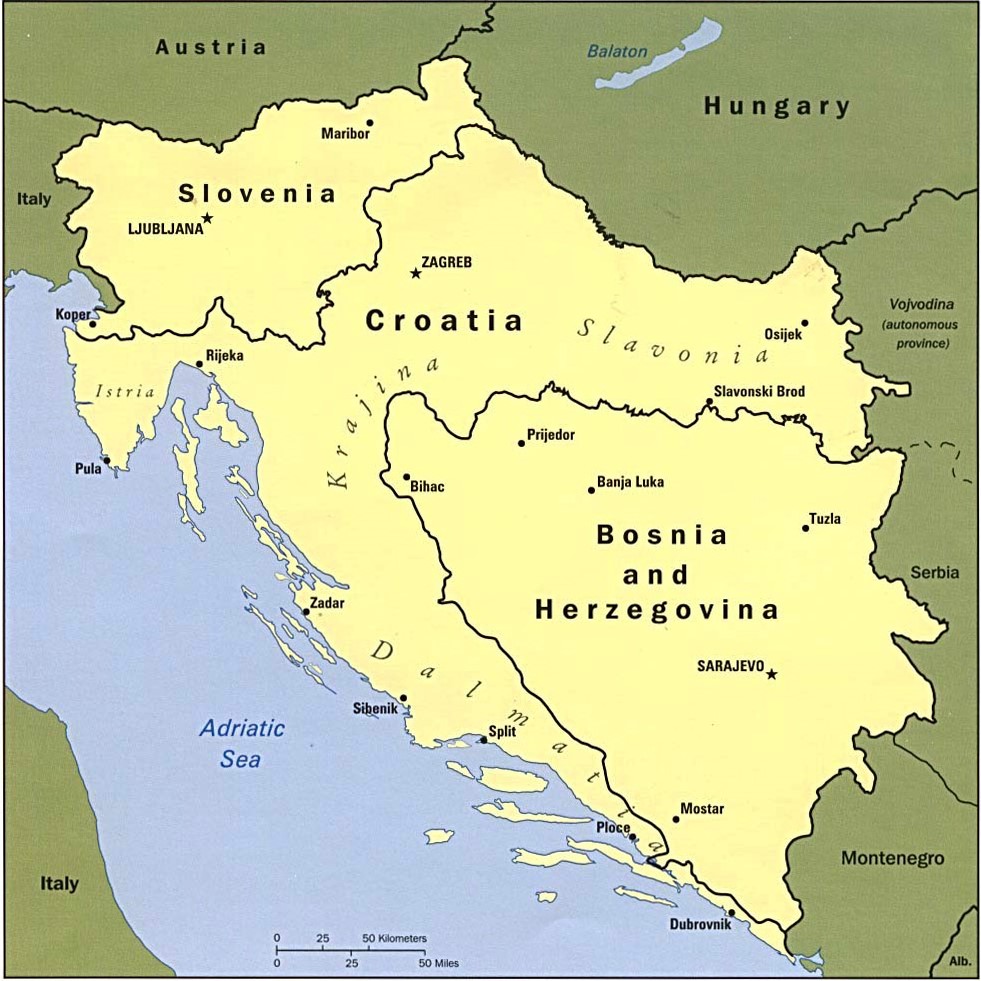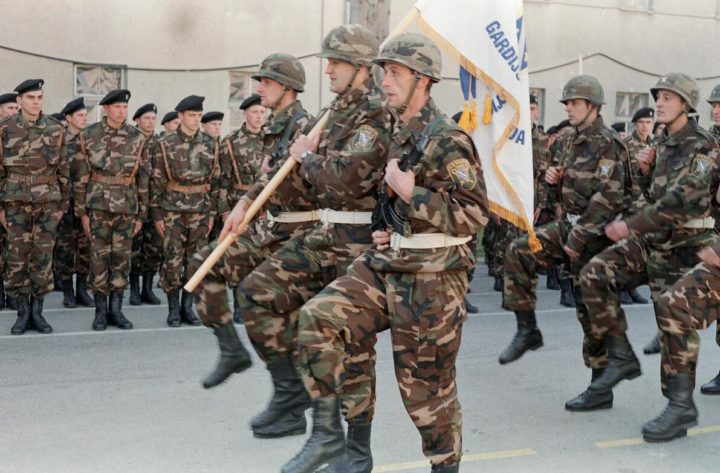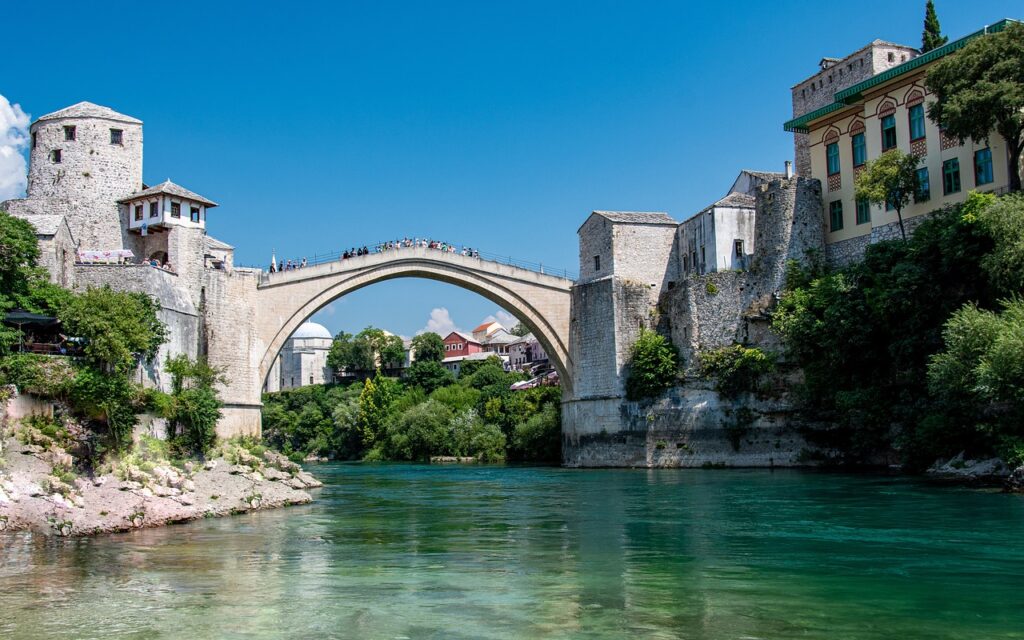Bosnia & Herzegovina
Grades
 On the morning of 9 November 1993, the town of Mostar, in Bosnia and Herzegovina, had just awoken. Spanning the emerald-green waters of the Neretva River, the Stari Most Bridge connected the two sides of the city. This 16th century Ottoman bridge is a single-arch structure made from stone held together with iron clamps and limestone mortar. The bridge stands 30 meters above the river and is 28 meters long. On each side of the bridge are fortified towers designed for defensive purposes with machicolations and arrow slits.
On the morning of 9 November 1993, the town of Mostar, in Bosnia and Herzegovina, had just awoken. Spanning the emerald-green waters of the Neretva River, the Stari Most Bridge connected the two sides of the city. This 16th century Ottoman bridge is a single-arch structure made from stone held together with iron clamps and limestone mortar. The bridge stands 30 meters above the river and is 28 meters long. On each side of the bridge are fortified towers designed for defensive purposes with machicolations and arrow slits.
A few locals were walking over the bridge, going about their daily lives. The air was filled with the sounds of conversation and the occasional splash of the river as fish jumped.
At 11:00 am, Croat forces began to shell the bridge, sending large chunks of stone into the river below. The shelling lasted for over an hour, with hundreds of shells raining down. The bombing caused massive destruction, the bridge quickly becoming engulfed in smoke and fire. Explosions echoed throughout the city as the bridge collapsed piece by piece.
Since its opening, originally as a wooden structure, in 1557, Stari Most had stood as a symbol of unity for centuries. Now, war had reached the town of Mostar.
 Understanding the causes and course of the Bosnian War is difficult. In a nutshell, most of the Balkan Peninsula had been part of Yugoslavia, a country created after World War I and later held together by General Tito, a communist, during and after World War II. Eventually, the country weakened.
Understanding the causes and course of the Bosnian War is difficult. In a nutshell, most of the Balkan Peninsula had been part of Yugoslavia, a country created after World War I and later held together by General Tito, a communist, during and after World War II. Eventually, the country weakened.
Part of the problem was centuries old. The Ottoman Empire, which was Muslim, had invaded the peninsula in 1345 A.D. The empire was finally pushed back, but many Muslims remained. They did not want to be part of Yugoslavia, which included Christian nations and which, being Communist, was officially atheist.
Among other dissenting nations, Bosnia and Herzegovina wanted to become their own nation. The Croats and Serbs opposed that. So did France and, secretly, the United States, then led by President William Clinton. They did not want any Muslim country in Europe. The Croats and Serbs, including Serbs living in Bosnia and Herzegovina, attacked the Muslim Bosnians.
 The results were horrifying. Over 62,000 Bosnians and Herzegovinians were killed, including 31,000 civilians, which made up 81% of all civilian deaths. In one incident alone, 8000 Bosnians and Herzegovinians died in the Srebrenica Massacre, including 600 toddlers and other young children. The Croats and Serbs did not just want to take over Bosnia and Herzegovina; they wanted to rid the country of all Muslims. They also wanted to humiliate the Muslims. Between 12,000 and 50,000 Bosnian/Herzegovinian women were raped, many of whom were murdered thereafter.
The results were horrifying. Over 62,000 Bosnians and Herzegovinians were killed, including 31,000 civilians, which made up 81% of all civilian deaths. In one incident alone, 8000 Bosnians and Herzegovinians died in the Srebrenica Massacre, including 600 toddlers and other young children. The Croats and Serbs did not just want to take over Bosnia and Herzegovina; they wanted to rid the country of all Muslims. They also wanted to humiliate the Muslims. Between 12,000 and 50,000 Bosnian/Herzegovinian women were raped, many of whom were murdered thereafter.
The United Nations (ironically, led by the United States) eventually brought the war to an end. Mostar, like the rest of Bosnia, was in ruins, with many buildings reduced to rubble. However, in 2004, an ambitious effort was made to rebuild the bridge to its original state. The project required the use of the same materials and technology as the original bridge. They had to recover stones thrown into the river after the explosion and integrate them into the construction.
The bridge was reopened, but today, three decades later, the country of Bosnia and Herzegovina is still in the process of healing and rebuilding. Despite the war’s physical and mental scars, the “Heart Shaped Land” is always a symbol of coexistence and inter-ethnic harmony.
Bosnia and Herzegovina Activity 1
Figure out if the underlined word is a noun, adjective, or determiner. Prove your work.
Ambitious effort
Arrow slits
Daily lives
Defensive purposes
Emerald-green waters
Fortified towers
Iron clamps
Large chunks
Limestone mortar
Massive destruction
Member nations
Occasional splash
Original state
Ottoman bridge
Same materials
Single-arch structure
Three decades
Two sides